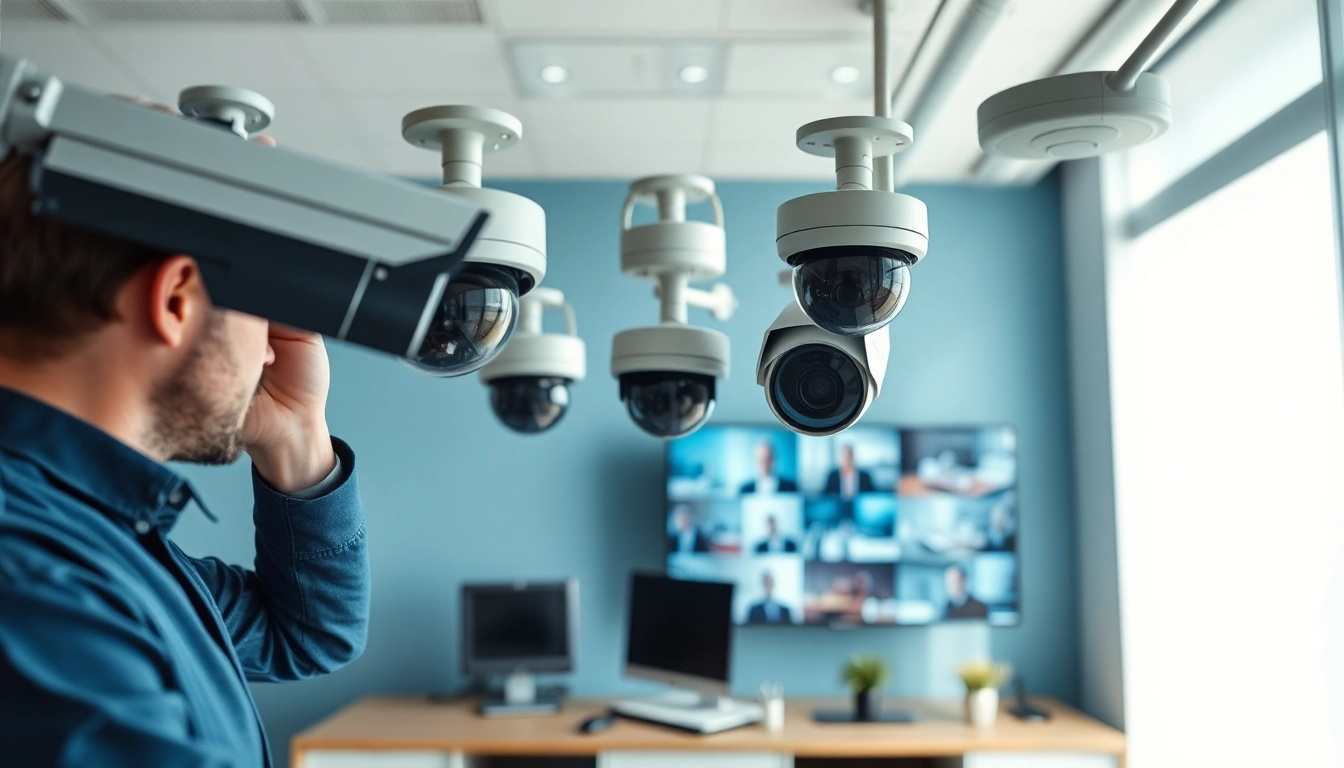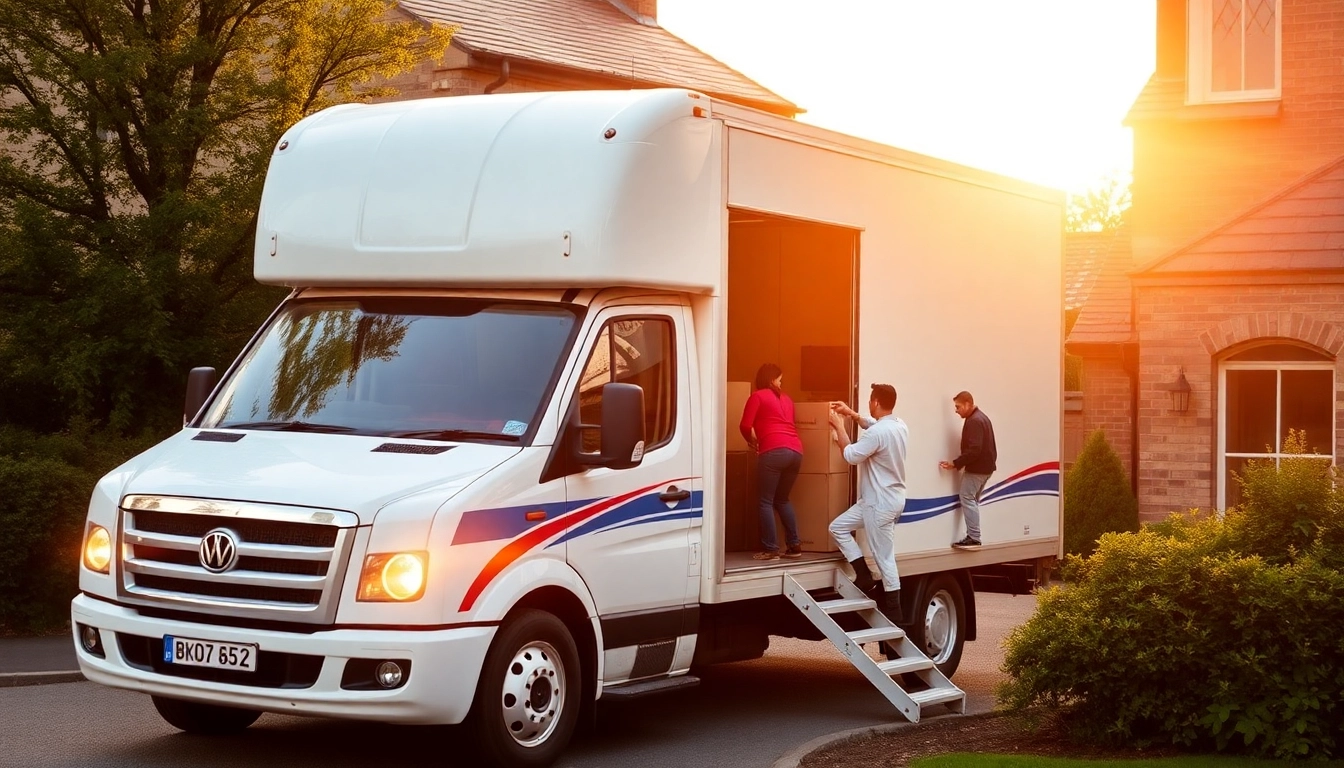Understanding CCTV & Remote Monitoring
What is CCTV & Remote Monitoring?
CCTV, or Closed-Circuit Television, refers to the use of video cameras to transmit a signal to a specific place, on a limited set of monitors. The main purpose of CCTV is to enhance the security of a premises by providing real-time video surveillance and recording footage for later use. Remote monitoring expands this concept by allowing users to access live and recorded video feeds from their CCTV systems over the internet, enabling them to observe their properties from virtually anywhere. This combination of technologies plays a crucial role in modern security strategies, ensuring peace of mind for business owners and residents alike.
Benefits of CCTV & Remote Monitoring for Businesses
The advantages of implementing CCTV & Remote Monitoring systems are manifold. Firstly, businesses can deter criminal activities such as theft or vandalism through visible surveillance cameras. The mere presence of CCTV systems can discourage potential criminals from targeting a premises. Additionally, these systems provide valuable evidence in the event of unforeseen incidents, which can be pivotal when dealing with law enforcement or insurance claims.
Moreover, the integration of remote monitoring capabilities allows business managers to observe operations in real time, facilitating better decision-making and oversight. This surveillance can also extend to monitoring employee conduct and productivity, ensuring compliance with company policies. Finally, many modern systems come equipped with analytics tools that can provide insights into customer behavior and traffic patterns, helping businesses optimize their operations.
How CCTV & Remote Monitoring Works
The function of CCTV systems hinges on a straightforward yet effective setup. Cameras capture video footage, which is transmitted to a digital video recorder (DVR) or a network video recorder (NVR). The DVR/NVR stores this video data and allows users to access it for review. When combined with remote monitoring, users can connect to their DVR/NVR systems via internet-enabled devices such as smartphones, tablets, or computers. This connection typically utilizes secure protocols, ensuring that video feeds remain private and protected.
Advanced systems may incorporate features such as motion detection and alerts, allowing users to respond to security events as they occur. Additionally, cloud storage solutions provide enhanced flexibility, ensuring that footage is securely stored and easily accessible without the limitations posed by on-site storage solutions.
Choosing the Right CCTV & Remote Monitoring System
Key Features to Look For
When selecting a CCTV & Remote Monitoring system, certain features should be prioritized to ensure optimal performance and security. High-definition video quality is critical; look for systems offering at least 1080p resolution, as this clarity can make a significant difference when identifying individuals or reviewing footage.
Night vision capabilities are another essential feature; many incidents occur after dark, so infrared capabilities can enhance surveillance in low-light conditions. Furthermore, pan-tilt-zoom (PTZ) cameras allow users to cover a wider area, providing flexibility in monitoring large spaces.
Integration with other security systems, such as alarms and access control, can streamline security protocols and improve overall response times. User-friendly mobile apps for real-time access and control are also invaluable, particularly for business owners who require constant oversight, even when away from the office.
Assessing Your Specific Security Needs
Assessing the specific needs of a business is crucial to selecting the appropriate CCTV & Remote Monitoring system. Start by evaluating the layout of your premises and identifying vulnerable points. Consider where theft, vandalism, or breaches could most likely occur, and prioritize camera placements in these areas.
Also, think about the size and scope of operations. A small retail store may only need a few well-placed cameras to monitor entrances and checkout areas, while a larger warehouse or industrial facility might require an extensive array of cameras, possibly even multiple cameras at single vantage points for comprehensive coverage.
Consulting with security professionals can be highly beneficial; they can provide insights based on experience and help tailor a system that addresses your unique requirements and budget constraints.
Integrating with Existing Security Protocols
To maximize the benefits of a CCTV & Remote Monitoring system, it’s essential to integrate it with existing security protocols. This means ensuring that all security technology works cohesively to enhance overall security efforts.
Evaluate existing security measures, such as alarm systems or access control mechanisms, and determine how they can work alongside new CCTV installations. For instance, integrating the CCTV system with motion detectors will allow for real-time alerts upon detecting unauthorized movement, enhancing response times.
Regular training for staff on how to use the system effectively and respond to alerts is crucial for maintaining a high security standard. Staff should understand how to access footage, respond to potential threats, and report any suspicious activity.
Installation and Setup of CCTV & Remote Monitoring
Best Practices for Installation
The installation of a CCTV & Remote Monitoring system should be methodically planned and executed to ensure full efficacy. Firstly, adhere to the recommended positioning of cameras; they should be placed at strategic angles that maximize the view while minimizing blind spots.
Use professional installation services when necessary; this ensures that all components are correctly set up and configured. Additionally, consider the wiring and power supply for cameras, especially if they are positioned in hard-to-reach areas.
Maintain an organized wiring layout to avoid tangles and ensure that maintenance can be performed easily down the line. Mark camera locations and document wiring schematics for easy reference during future upgrades or troubleshooting.
Configuring Your CCTV & Remote Monitoring Settings
Once installed, the next step involves configuring your CCTV & Remote Monitoring system to suit operational needs. Begin by setting the appropriate resolution and frame rates according to your storage capabilities and required quality.
Adjust sensitivity settings for motion detection features to minimize false alarms while ensuring that legitimate threats are captured. Establish secure passwords and enable encryption to safeguard your footage from unauthorized access.
Regularly review your settings to adapt to changing needs, such as adjustments in business layout or operational hours, ensuring that the system remains current and effective.
Common Pitfalls to Avoid During Installation
Avoiding installation pitfalls is key to ensuring your CCTV & Remote Monitoring system is effective. Some common mistakes include inadequate camera placement, which can lead to blind spots, or placement too high, resulting in compromised video quality.
Another frequent error is neglecting proper cabling or connectivity; ensure that cables are secured and that connections are tested before finalizing installation. Environmental factors should also be considered; cameras should be weatherproofed and installed away from potential damage sources.
Lastly, do not overlook the importance of secure data management. Ensure that footage is stored appropriately and that access is limited to authorized personnel only.
Maintaining Your CCTV & Remote Monitoring System
Routine Maintenance Tips
Regular maintenance of your CCTV & Remote Monitoring system is crucial for sustaining optimal performance. This includes routine checks on camera lenses to ensure they are clean and unobstructed. Accumulated dirt or debris can significantly impair video quality.
Check that all connections—including power supplies and network connections—are secure and functioning. Conduct monthly system tests to confirm that all cameras are operational and sending data correctly.
Documentation of maintenance schedules will help track tasks and allow for timely interventions, helping to avoid larger issues down the line.
Software Updates and Upgrades
The technological landscape is ever-evolving, which makes software updates essential for ensuring your CCTV & Remote Monitoring system remains effective against new threats. Regularly check for updates for both the camera firmware and your monitoring software, as these often include security patches, new features, and performance improvements.
Consider the potential need for upgrading hardware, especially if your business expands or if you find that your current system’s capabilities are insufficient. Invest in scalable solutions that enable you to add additional cameras or storage as needed.
Monitoring and Data Management Strategies
The effectiveness of a CCTV & Remote Monitoring system is heavily tied to how well data is managed. Establish clear protocols for monitoring footage and responding to incidents. Designate specific team members to oversee surveillance tasks and ensure that they are trained to spot unusual activity.
Utilize analytics tools available within many modern systems to identify trends and potential security threats. This data-driven approach can lead to preemptive measures being put in place, thus improving overall security.
Regular reviews of recorded footage can help identify gaps in your security and allow for adjustments to be made accordingly. Establish a routine schedule for reviewing archived footage for any unusual activity.
Evaluating the Performance of Your CCTV & Remote Monitoring
Key Performance Metrics to Track
Evaluating the performance of a CCTV & Remote Monitoring system is vital to ensuring that security goals are being met. Key metrics to track include the number of incidents recorded, response times to alerts, and the effectiveness of the system in deterring threats.
Analyze the visuals quality from various cameras to assess if the footage is sufficient for identification purposes. Additionally, monitor system uptime to ensure that the system is functional at all times, minimizing any blind spots during downtime.
Analyzing Incident Response Data
Incident response data plays a significant role in understanding security performance. Document and analyze how quickly and effectively incidents are addressed by staff or security personnel. This will reveal areas needing improvement in your response protocols and training.
Conduct post-incident reviews to glean actionable insights. Each response should be critically evaluated to understand what worked, what didn’t, and how protocols can be refined for future incidents.
Improving Security Based on Performance Feedback
Utilizing performance feedback is essential for continuously enhancing your CCTV & Remote Monitoring strategy. Make adjustments based on the data collected and analyzed throughout your incident tracking and performance metrics evaluations.
Engage with staff to gather insights on their experiences with the system, as they are often the first to encounter issues or identify potential vulnerabilities. Training should be adapted accordingly, ensuring all team members are clear on protocols and responsibilities.
Taking a proactive approach to surveillance, regularly updating protocols based on data, and responding to emerging trends keeps your security measures robust and relevant.



